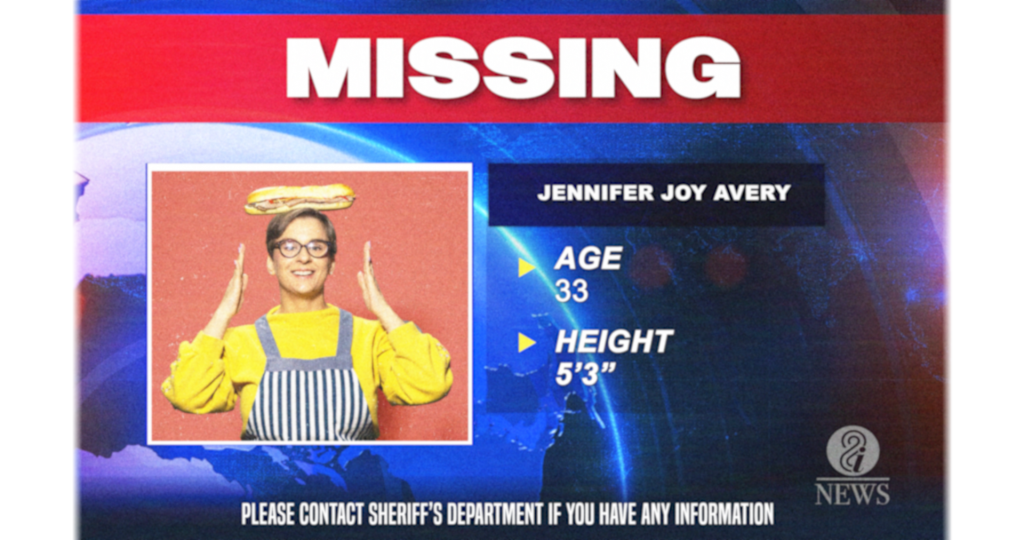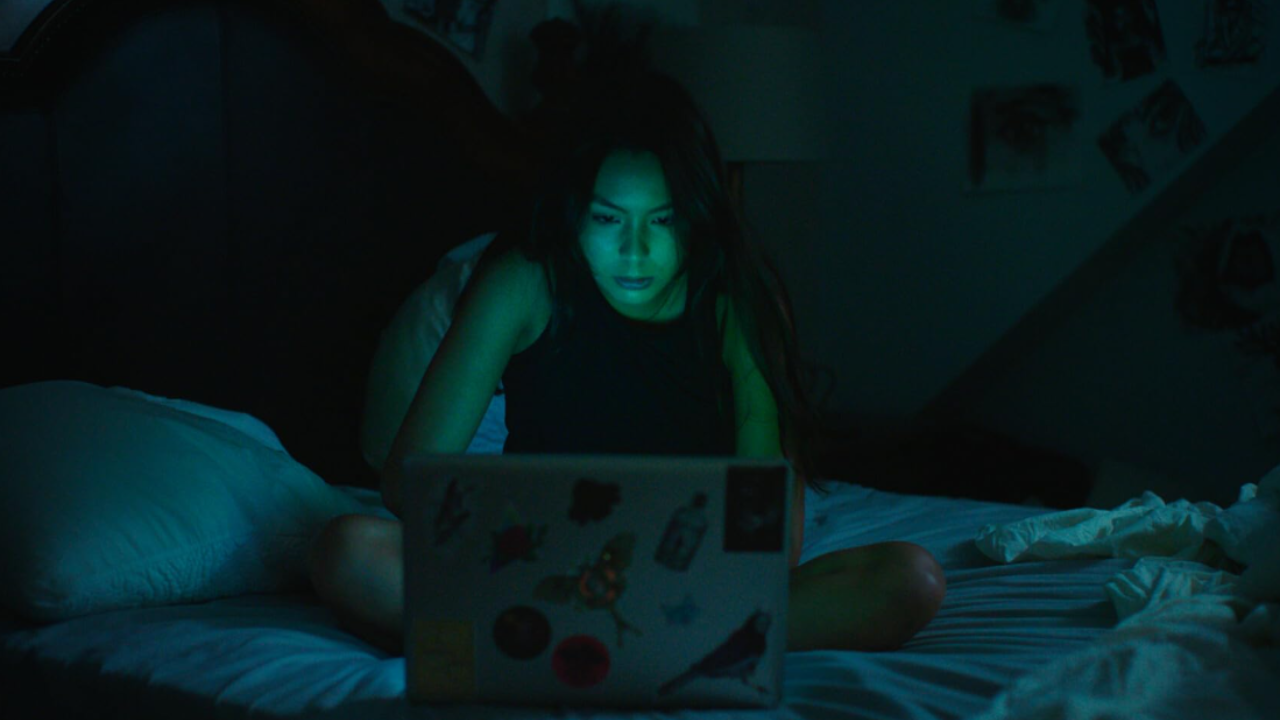Reviews
‘The Nun II’ Review: Say Your Prayers
I can confidently say The Nun II is far and away from its predecessor’s flaws, even if it has a few of its own. When The Nun II has its rough spots, they can drag. But when it pulls off what it’s going for, it is fiery and fun in its execution with its own aggressive voice.

I did not go into The Nun II with high hopes. I only recently rewatched The Nun and was underwhelmed for a second time, primarily with the scares and structure. Valak’s first feature film had some redeeming qualities but didn’t feel like a necessary addition to the Conjuring universe. The demonic entity that had so much influence with so little screentime in the first two Conjuring films never really jumped out at me until the end of The Nun, and by then, it was too late.
A Marked Improvement From the Original
I can confidently say The Nun II is far and away from its predecessor’s flaws, even if it has a few of its own. When The Nun II has its rough spots, they can drag. But when it pulls off what it’s going for, it is fiery and fun in its execution with its own aggressive voice.
The Nun II: Sister Irene vs. Valak’s Deadly Rampage
The Nun II, for the uninitiated (nun-initiated?), follows Sister Irene again as she hunts down her rival Valak. Thought to have been sealed away in the first film, Valak uses the body of Irene’s friend Frenchie to wreak havoc across Europe, with her final stop on the massacre tour being a boarding school in France. As Sister Irene and her apprentice, Sister Debra, try to figure out what Valak wants and where she’s going, bodies pile up around Frenchie and the children, leaving no one safe.
The opening of this film is perfectly executed in its nastiness; if you’ve been craving something as spicy as Evil Dead Rise, The Nun II has you covered, and it’s shocking how high quality it is. The Nun II is a nastier take on Sister Irene’s first journey, with some mean-spirited and enjoyable kills left in Valak’s wake. When people die in this film, they die hard, and it’s just the kind of hateful behavior you’d expect from a demon with a reputation like Valak’s.
Bonnie Aarons Returns as Valak (Pay Her Warner Bros.)
Bonnie Aarons is always a treat, and that’s no different here since she gets a lot of screen time just demolishing her victims’ bodies and minds. The practical effects used in the film are few and far between. Still, many of the digital effects on display are top-notch (barring one very bad, PS3 graphics-looking effect involving a Valak painting).
Though the absence of Damien Bachir hurts (especially their justification for why he isn’t in the film, which felt downright weak), the film’s cast still brings the heat like a packed church on Easter Sunday. Taissa Farmiga is just as enjoyable as she was the first time around playing the soft-spoken but wise Sister Irene. The script here shows you how she’s grown from the experience in the first film and gives us a better glimpse into her life before the convent, which was a welcome surprise. While it takes until the movie’s final sequence for her to really play with the explosive exorcist action the film has been teasing, she gives it her all and has me wondering what other horror franchises she could helm as the lead as I left the theatre.
Standout Performances Amid a Mixed Bag
Storm Reid does well as the young Sister Debra, an American novitiate having a crisis of faith and tagging along searching for a miracle. Regrettably, her character doesn’t have enough room to breathe, as she only gets a pittance of backstory and a borderline nonexistent arc. In terms of her performance, I really can’t complain since she shows her pipes with some great screaming and terrified acting. Jonas Bloquet’s return to the role as the fan favorite Frenchie actually lets him stretch his acting chops beyond comic relief, and if he doesn’t get more roles as an antagonist after this, I would be surprised; this film utilizes him perfectly and doesn’t downplay his grotesque, haunted performance for anything.

Stunning Set Design Elevates The Nun II’s Atmosphere
Speaking of utilizing something perfectly, everyone who sees this movie will agree that the set design is incredible. The Nun liked to bask in dark corridors and open spaces that made shots visually boring rather than spooky. The Nun II, in contrast, has these terrific, rich environments throughout the boarding school that are filled to the brim with set decoration that all falls into the right place; the rooms feel layered and full, and they actually help generate a lot of tension. The whole school becomes a series of interconnected set pieces for the big finale, shot expertly by Michael Chaves, who captures the destruction and transformation of the school with creative shots (and improved lighting from his last venture with Valak).
The score is an improvement from the first, to be sure, ditching the overly droning chorus of chants for a proper soundtrack, but don’t expect anything sonically groundbreaking or particularly new. That being said, the sound design of the rest of the film is crucial to enjoying it. The Nun II is one of those films that feels almost mandatory to watch with great speakers at home or in the theatre. Otherwise, a good chunk of the scares will fall flat, and the destructive finale will lose much of its oomph. This goes doubly for the cheaper jump scares that amount to a loud noise and a snap zoom onto Valak’s face; they’re as effective as getting whipped on your ear with a rosary in the theatre, so imagine that through cheap headphones.
A Lengthy Horror Journey
The Nun II is noticeably hamstrung in its pacing thanks to its hefty hour and fifty-minute runtime, nearly half an hour longer than the first. This is primarily due to the film’s structure, which alternates between our protagonists’ and antagonists’ plots, which go back and forth quite a bit. When the two plots converge, you feel an interesting climax coming. Still, the stories being so separate means that the film’s third act needs to be stretched out and padded to oblivion so these characters can interact. You get a truly incandescent finale when Sister Irene and Valak clash, but I’d be lying if I said I didn’t start getting bored waiting for it to arrive.
Is The Nun II Worth Watching?
As much as I complain about horror movies being too long, The Nun II ends up being a fun enough romp that I can mostly look past it on the first go around; your mileage may vary. I found it an enjoyable, biting sequel that ups the ante despite its pacing problems. Fans of the original will love it, and those who disliked the original should find a glimmer of hope in how the cinematography comes together for this one. As far as movies to begin the Halloween horror season go, you could do a lot worse, so watch it in theatres if you can.
Hollywood actors and writers are currently on strike against the AMPTP. This movie is not associated with any struck production. However, you can still support those affected most by the strike by donating to the Entertainment Community Fund here!
Reviews
Brooklyn Horror Film Festival 2025: ‘Buffet Infinity’ Review

Within the found footage subgenre exists an even more niche and untapped market. Screen life has slowly overtaken found footage; hardcore fans, like myself, ache for something different. One of the more interesting sub-subgenres of found footage is something that I don’t think has a name yet, so let’s name it here and now. How about…TV-gone-rogue! The TV-gone-rogue subgenre is small. Ghostwatch got the ball rolling for these gone rogue-like films, but there was radio silence for quite some time. It would be Chris LaMartina’s WNUF Halloween Special that really brought this idea back into the limelight. Many filmmakers have tried to make TV-gone-rogue interesting, and many have failed. That is until Simon Glassman stepped onto the scene with Buffet Infinity.
Buffet Infinity: A Chaotic Tale of Westridge
The town (city?) of Westridge is whisked into chaos when the new Buffet Infinity restaurant rolls into town. Local sandwich shop owner Jennifer Avery (Allison Bench) is the first to take the soon-to-be conglomerate to task with increasingly pointed advertisements. Suddenly, local restaurant owners/workers go missing in droves as Buffet Infinity expands into neighboring businesses. Sinkholes, missing cityfolk, quarantines, and mysterious sounds abound, leaving residents to ask one question…who really has the sauce?
On the Brooklyn Horror Film Festival schedule, the header image for Buffet Infinity shows multiple people T-posing and floating in the sky. I was immediately sold. I had no clue what I was getting into, and I didn’t want to know. The film was introduced as “one of the craziest we have this year.” (Slightly paraphrasing.) What was I about to watch? Little did I know, it was about to be an hour and forty minutes of small-town madness.
Writers Allison Bench and Elisia Snyder, and writer-director Simon Glassman, transport viewers into an upside down world of weaponized local ads; a thriving town invaded by the deep pockets of monopolized capitalism. As someone who grew up in a decently sized town, though probably not large enough to be considered a city, there was a tinge of nostalgia that accompanied Buffet Infinity. Westridge feels cozy and intimate, a town where everyone knows your name. It’s a “baked in a buttery flaky crust” town. Sure, they have their McDonald’s and Burger Kings, but the real townsfolk eat at Jennifer’s sandwich shop–local knitting circles murmur about what they think is in Jennifer’s secret sauce. Simply put, Westridge feels like a home that many people like myself grew up in. And it reminds us of a simpler time that’s long gone.

A Unique Blend of Humor and Eldritch Terror
Buffet Infinity hides its horror well. It slowly guides the viewer into a sense of unease. As easily as the creators have you laughing, they have you squirming. The absurdist joy quickly transforms into Eldritch terrors from beyond. Many filmmakers say they’re inspired by the idea of it’s-not-what-you-see that’s scary, but many times it feels performative. Bench, Glassman, and Snyder have crafted a truly special script that edges you with terror and excitement. They constantly push you to the edge of release, and then back away. It’s the Japanese water torture of exposition. And, for me, it works incredibly well.
One of the most important aspects of Buffet Infinity is the over-capitalization of our lives. While the creators tackle this idea in a tongue-in-cheek manner, their message is highly effective. For the most part. This constant tete-a-tete between Buffet Infinity and the locals is highly amusing, but brings a larger conversation to the forefront. The town I grew up in is a shadow of what it once was. And I know many feel the same about the towns they grew up in. I can already hear the moans of people who dislike this film: “Brandon, it’s not that deep.” And I would highly disagree. Buffet Infinity feels like a reflective protest film–a loud and proud middle finger at what we should have said when the Super Walmart put mom and pops out of business.
Sorry, this review has gone off the rails. Let’s reel it back in a bit.
Why Buffet Infinity Redefines Found Footage
Buffet Infinity is a riotous romp, a hilarious horror that goes from zero to 100 pretty damn fast. Each commercial slowly builds on its last and uniquely tells its story. This film sets a new precedent for the TV-gone-rogue subgenre. Not to directly compare, but a film like WNUF Halloween Special (a film I love) uses its commercials as a coda; it’s a separation of what you saw/heard and prepares you for the next movement. Buffet Infinity uses its commercial to create the story. Instead of watching news pieces, then irrelevant commercials, then back to news pieces, Buffet Infinity breaks the mold. Hell, it creates the mold.
As someone who has been dying to see a Welcome to Nightvale film, Buffet Infinity is the closest thing I could ask for. It is full of killer performances (looking at you, Ahmed Ahmed), is well-crafted, and sets a new precedent on an underutilized side of found footage. Buffet Infinity is a full-course meal. I highly suspect that Buffet Infinity will gather the unwavering support that Hundreds of Beavers gathered and will go on to be considered an instant classic of the 2020s.
Reviews
Brooklyn Horror Film Fest 2025: ‘It Needs Eyes’ Review

We are all very much aware of how much time we spend on our phones. More importantly, anyone on the internet can see how younger generations are impacted by being constantly online. So, Zack Ogle and Aaron Pagniano’s new film, It Needs Eyes, is preaching to the choir. However, it adds creepy layers to the conversations many of us are already having today.
It Needs Eyes follows a teen named Rowan (Raquel Lebish) who is moving in with her aunt after a traumatic event. Her aunt Mella (Lydia Fiore) hasn’t spoken to the family in years. So, her relationship with her niece is strained to say the least. However, she has stepped in now that Rowan’s father is in the hospital. Further widening their divide is the fact that Rowan is glued to her phone.
The Internet Is Scary
We see Rowan watching random videos, as she tries to distract herself from her own thoughts while she worries about her father. However, soon, cat videos aren’t doing it for her, and she starts to find extreme videos online. Things escalate to the point that she is watching self-harm videos and clips of people dying. This addiction begins to make it hard for her to connect with the people around her, including her new neighbor and love interest, Alex (Isadora Leiva).
It Needs Eyes has a protagonist that many can relate to. After all, aren’t we all using these smart devices to hide from our own problems? Who among us hasn’t lost an embarrassing amount of hours watching videos and reels? However, because it’s driving in the internet addiction lane, Rowan’s need for content escalates. She needs darker videos in the same way that someone makes the leap into harder drugs. Her journey parallels nicely with her father’s battle with addiction, which is one of the many things Rowan doesn’t seem ready to face.
Addiction and Loneliness are a Deadly Combo
Rowan’s addiction, loneliness, and inability to fully connect with people not on her phone eventually leads her to stumble across the ultimate score. She discovers a woman named Fishtooth (Lola Blanc) who made videos in the 80s and seemingly disappeared. Rowan cannot let this mystery go and soon begins to follow clues that Fishtooth may be closer than she thinks. This is where the creepy mystery thread begins to weave itself around all of the other threads of the film. Before Fishtooth was introduced, I was starting to worry this movie would just be seven fucked up images in a trench coat.
It Needs Eyes is one of those movies you go back and forth on. I loved discussing the themes of it in the bar after the Brooklyn Horror Film Fest screening. I even really dug some of the twisted imagery and topics it manages to tackle. The movie deserves some respect for how it handles so many issues surrounding internet culture without straying too far from its path. If you’re looking for a dark exploration of how the internet is absorbing us and preventing us from being present in our actual lives, this is your movie. It’s an interesting and at times disturbing reminder that we should all unplug more often.























